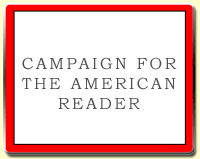 Nancy W. Sindelar's new biography is Influencing Hemingway: The People and Places That Shaped His Life and Work. At Publishers Weekly she ranked the six best Hemingway novels.
Nancy W. Sindelar's new biography is Influencing Hemingway: The People and Places That Shaped His Life and Work. At Publishers Weekly she ranked the six best Hemingway novels.Number one on the list:
The Sun Also Rises - Hemingway’s first novel is at the top of my list because it reflects his reliance on his traditional Midwestern values as he encountered new experiences and values in post-World War I Europe. Using friends and acquaintances that populated the cafes along Boulevard Montparnasse in Paris, he reveals his concern about the valueless life of these Lost Generation characters and begins his personal and literary search for meaning in what appears to be a godless world. In the midst of their heavy drinking and meaningless revelryRead about the other books on the list.during a fiesta in Spain, Pedro Romero, the matador, becomes a hero. He conducts himself with honor and courage, and it is here we see the beginnings of what will become the Hemingway Code.
The book also tops my list because it reveals Hemingway’s courageous attempt to write in a new and different way by portraying the bad and the ugly as well as the beautiful. Though The Sun Also Rises was well received by the critics, it was not well received by Hemingway’s acquaintances who saw themselves portrayed as self-indulgent, alcoholic and sexually promiscuous in his unflattering, but honest, characterizations. Nor was it well received by his mother, who said he had produced “one of the filthiest books of the year.”
The Sun Also Rises is on Chris Pavone's list of five books that changed him, Sara Jonsson's list of seven of the best literary treatments of envy, Simon Akam's top ten list of the most attractive women in literature and John Mullan's list of 10 of the best taxis in literature. It came in at #6 on the American Book Review list of the 100 best last lines from novels; it is a book that Andre Dubus III frequently returns to.
--Marshal Zeringue



